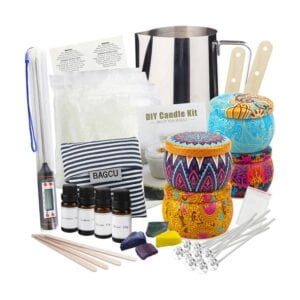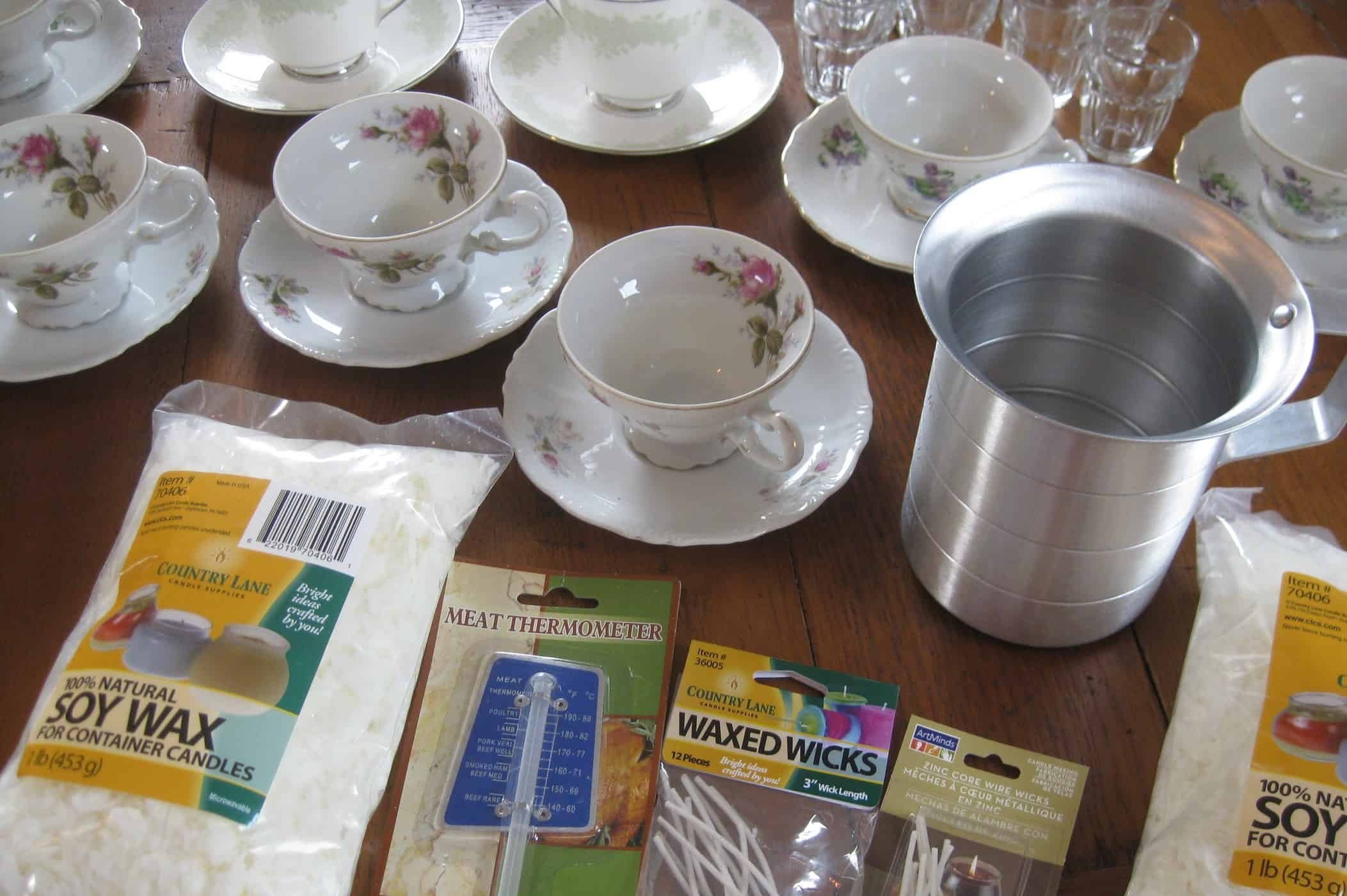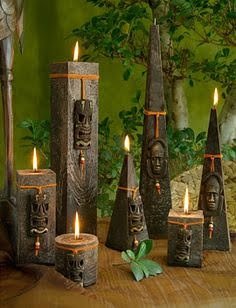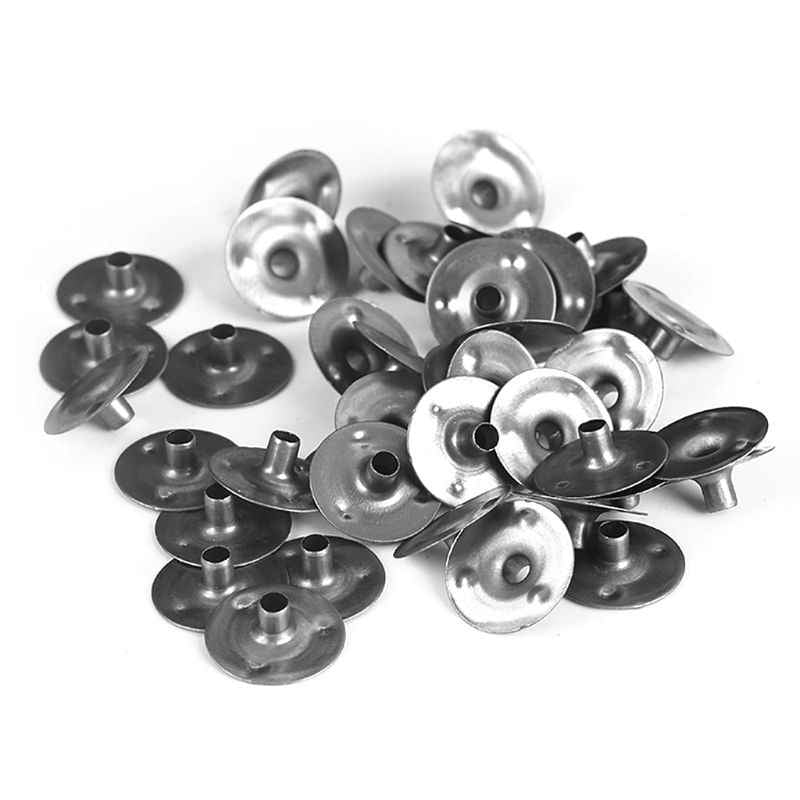Candle making is a fascinating craft that allows for creativity and personalization in creating beautiful, aromatic candles. One question that often comes up is, “Can you use food coloring in candle making?” The answer may surprise you. In this article, we will delve into the world of colorants for candles, specifically looking at the use of food coloring as a possible option.
Color plays a significant role in the appeal of candles. It can set the mood, enhance decor, and even evoke certain emotions. When it comes to choosing the right colorants for your candles, there are primarily two options to consider: food coloring and candle dye. Each type has its own characteristics, benefits, and potential drawbacks that need to be carefully considered before use.
While food coloring may seem like a convenient and easily accessible option for coloring candles, there are important safety considerations to keep in mind. Certain risks may arise from using food coloring in candle making, such as unwanted chemical reactions or changes in burn performance. It’s crucial to take proper precautions and conduct thorough testing before incorporating food coloring into your candle-making process.
Differences Between Food Coloring and Candle Dye
When it comes to adding color to candles, there are two main options to consider: food coloring and candle dye. Both types of colorants have their own unique characteristics that can affect the final outcome of your candle-making project. Understanding the differences between these two options can help you make an informed decision on which is best for your needs.
1. Color Intensity: Candle dye is specifically designed to create vibrant, long-lasting colors in candles. It is highly concentrated, meaning you only need a small amount to achieve the desired shade. On the other hand, food coloring is often less intense and may require a larger quantity to achieve the same level of color saturation.
2. Solubility: Candle dye is formulated to dissolve easily in wax, ensuring even distribution of color throughout the candle. Food coloring, however, may not mix as seamlessly with the wax and could result in uneven coloring or specks of color throughout the candle.
3. Scent Interaction: Some food coloring contains additives or fragrances that may not be suitable for burning in candles. These additional components could interfere with the scent throw of your candle or cause undesirable reactions when heated. Candle dye is specifically crafted to be safe for use in candles without impacting their fragrance.
Safety Considerations When Using Food Coloring in Candle Making
When it comes to using food coloring in candle making, safety should always be a top priority. While food coloring may seem harmless at first glance, there are certain risks and precautions to consider when incorporating it into your candle-making process. It is essential to understand that not all food coloring products are suitable for use in candles, as some may contain ingredients that can be flammable or produce harmful fumes when burned.
Potential Risks
One of the main risks associated with using food coloring in candles is the potential for the colorants to affect the burn quality of the candle. Certain dyes and pigments in food coloring
Precautions to Take
To minimize these risks, it is crucial to choose food coloring products specifically labeled as safe for candle making. Be sure to read the ingredients carefully and avoid any colorants that contain materials known to be hazardous when burned. It is also recommended to test a small amount of the food coloring in a sample candle before creating larger batches to ensure that it performs safely and effectively.
Furthermore, always follow proper candle-making guidelines and safety measures, such as working in a well-ventilated area and wearing appropriate protective gear when handling colorants. By taking these precautions, you
Testing Food Coloring for Candle Making
When it comes to adding color to candles, many people wonder if they can use food coloring to achieve their desired hues. The answer is yes, you can use food coloring in candle making, but there are important factors to consider before incorporating it into your candles. Understanding the differences between food coloring and candle dye is crucial in determining the safety, effectiveness, and final quality of your colored candles.
Food coloring and candle dye serve similar purposes in adding color to candles, but they have distinct characteristics that set them apart. Candle dye is specifically formulated for candle making, ensuring that it blends well with the wax, maintains stability during the burning process, and does not affect the overall quality of the candle.
On the other hand, food coloring is designed for edible items and may not perform as effectively in candles. It’s essential to consider these differences when deciding which colorant to use in your candle making process.
To test food coloring for candle making, follow a step-by-step process to determine its suitability for your candles. Start by selecting a small amount of wax and adding a few drops of food coloring to see how the color disperses.
Monitor how the color blends with the wax, examines its stability when melting and burning, and assess any changes in scent or texture. Conducting these tests will help you understand how the food coloring interacts with the wax and whether it produces the desired results in your candles.
| Aspect | Description |
|---|---|
| Characteristic differences | Candle dye specially formulated for candle making; Food coloring designed for edible items |
| Testing process | Select small amount of wax; Add few drops of food coloring; Monitor color dispersion, stability when burning |
Tips for Achieving Desired Colors in Candles With Food Coloring
When it comes to achieving desired colors in candles using food coloring, there are several techniques and tricks that can help you get the perfect hue. One important thing to keep in mind is that food coloring is not as concentrated as candle dye, so you may need to use more of it to achieve the desired color intensity.
Additionally, the type of wax you are using can also affect how the color turns out, so be sure to take that into consideration when working with food coloring.
One useful tip for achieving vibrant colors with food coloring is to mix different colors together. By blending various shades, you can create unique and customized colors for your candles. Another trick is to add the food coloring slowly and in small increments, mixing well after each addition. This will help you avoid adding too much color at once and potentially overpowering the wax.
It’s also important to remember that certain colors may appear differently once the candle is lit, so consider testing out different color combinations before making a large batch. Some hues may darken or lighten when heated, so experimenting beforehand can help you find the perfect balance. With a bit of trial and error, you can use food colouring in candle making successfully to achieve a wide range of beautiful colors for your homemade candles.
| Tips for Achieving Desired Colors in Candles | Techniques and Tricks |
|---|---|
| Blend different colors together | Create unique hues by mixing various shades |
| Add color slowly and in small increments | Avoid overpowering the wax by mixing well after each addition |
| Test color combinations before making a large batch | Some hues may change when heated, so experiment to find the perfect balance. |
Potential Effects of Using Food Coloring in Candles
When it comes to using food coloring in candle making, there are some potential effects to consider, especially in terms of how certain colors may impact the candle’s burn and scent. While food coloring can be a fun and accessible option for adding color to your candles, it is important to understand how different colors may affect the final product.
Here are some key considerations regarding the potential effects of using food coloring in candles:
- Burn Quality: Certain food colorings, particularly those that contain water-based dyes, can negatively impact the burn quality of a candle. This is because excess moisture from the coloring can interfere with the wick’s ability to properly absorb wax and maintain a steady flame. Additionally, some colors may produce soot or smoke when burned, altering the overall burning experience.
- Scent Throw: The fragrance of a candle can also be affected by the use of food coloring. Strongly pigmented colors can sometimes overpower or alter the intended scent of the candle. Lighter colors may not have as much of an impact on the fragrance, but it is still important to consider how colorants interact with the essential oils or fragrance oils used in your candle recipe.
- Aesthetic Appeal: Beyond burn quality and scent throw, certain colors can also influence the overall aesthetics of your candles. Darker hues can create a more dramatic look, while lighter shades may give off a softer appearance. Understanding how different colors interact with each other and with the wax base is crucial for achieving your desired visual effect.
Overall, while food coloring can be an easy way to add color to your candles, it is important to carefully consider how each hue may impact both the performance and aesthetics of your final product. Testing different colorants in small batches before committing to a larger production run can help you determine which shades work best for your specific candle-making process and goals.
Alternatives to Food Coloring for Coloring Candles
When it comes to coloring candles, using food coloring may not always be the best option. While some may wonder, “Can you use food coloring in candle making?” there are actually more suitable alternatives available. In this section, we will explore other natural and synthetic options for coloring candles that offer better results and compatibility with candle-making materials.
Natural Colorants
One of the most popular natural colorants for candles is soy wax dye. Derived from soybeans, this type of dye is environmentally friendly and offers a wide range of colors. Additionally, natural ingredients such as beetroot powder, turmeric, spirulina powder, and cinnamon can be used to create unique hues in candles. These natural colorants not only provide vibrant colors but also add a touch of organic appeal to your candle creations.
Synthetic Colorants
Synthetic colorants are specially formulated for candle making and are designed to achieve intense and long-lasting colors. Candle dye blocks or liquid candle dye are common synthetic options that offer a wide spectrum of shades without compromising the quality or burn characteristics of the candle. These colorants are specifically created to blend well with various types of waxes, ensuring consistent results while maintaining the integrity of the candle’s performance.
Mica Powders
Mica powders are another synthetic option that can be used to color candles. These powders come in a variety of metallic and shimmering shades, adding a luxurious touch to your candle designs. Mica powders are versatile and easy to work with, allowing you to create eye-catching candles that stand out visually. However, it is essential to ensure that mica powders intended for cosmetic use are safe for candle making before incorporating them into your candles.
Exploring these natural and synthetic alternatives offers a creative way to enhance your candle-making process while avoiding any potential risks associated with using food coloring in candles. By choosing the right colorants for your candles, you can achieve beautiful hues that complement your overall design aesthetic without compromising the quality or safety of your homemade candles.
Conclusion
In conclusion, the use of food coloring in candle making can be a creative and cost-effective way to add color to your candles. While it may seem like a convenient option, especially for beginners or hobbyists, it is essential to understand the differences between food coloring and candle dye. Food coloring may not always produce the desired results in terms of color intensity or stability in the candle wax.
When considering using food coloring in candle making, safety should always be a top priority. It is crucial to be aware of any potential risks associated with certain types of food coloring and take necessary precautions to ensure safe handling during the candle-making process. Testing the colorants before adding them to your candles is also recommended to avoid any unwanted reactions or changes in the final product.
While there are alternatives to using food coloring for coloring candles, such as candle dye or natural colorants like herbs and spices, experimenting with different techniques can help you achieve unique and custom colors. Overall, whether you choose to use food coloring or explore other options, understanding how different colorants interact with candle wax can lead to beautiful and vibrant results in your homemade candles.
Frequently Asked Questions
Can You Use Food Coloring in Candles?
Using food coloring in candles is not recommended because it can affect the way the candle burns and potentially produce harmful fumes when lit. It’s best to use dyes specifically made for candles to ensure safety and quality.
What Coloring Is Safe for Candles?
Safe colorants for candles include dye chips, liquid candle dyes, and mica powders. These are specifically designed for candles and are formulated to withstand high temperatures without affecting the burn or fragrance of the candle. Always check the labeling to ensure they are safe for use in candles.
Is Food Colouring Flammable?
Food coloring is generally not flammable on its own because it is water-based. However, when added to a candle wax that burns, it can produce unexpected results like uneven coloring, off-putting scents, or even cause flaring if the dye content is too high.
It’s crucial to use colorants meant for candles that have been tested for safety in burning conditions.

Welcome to my candle making blog! In this blog, I will be sharing my tips and tricks for making candles. I will also be sharing some of my favorite recipes.





